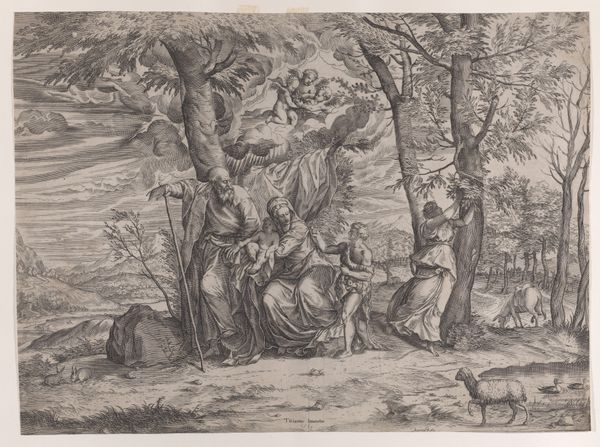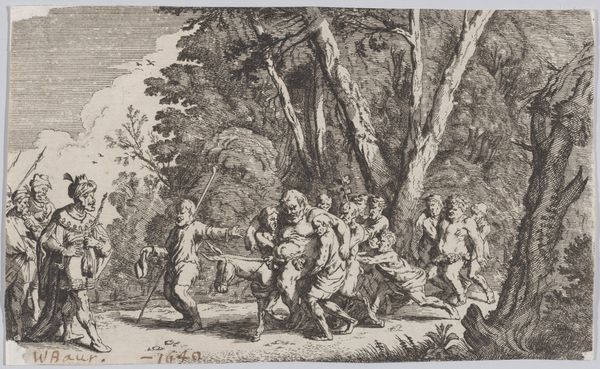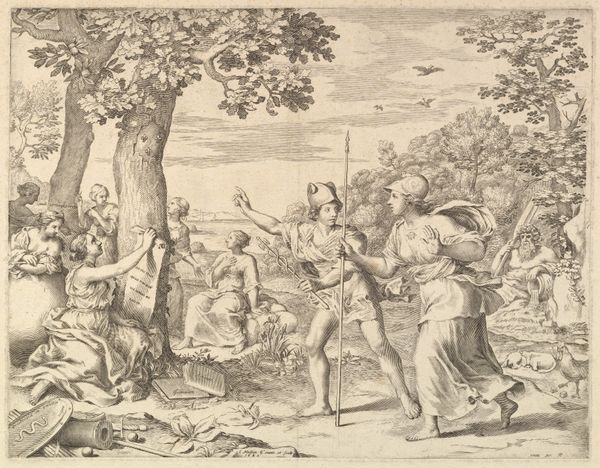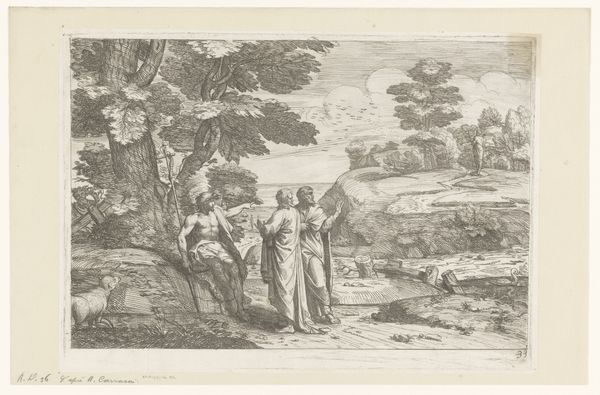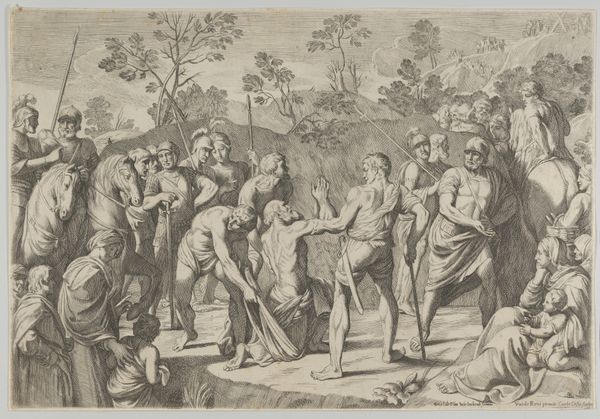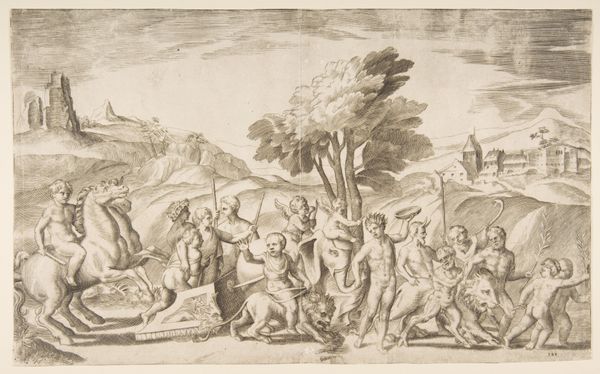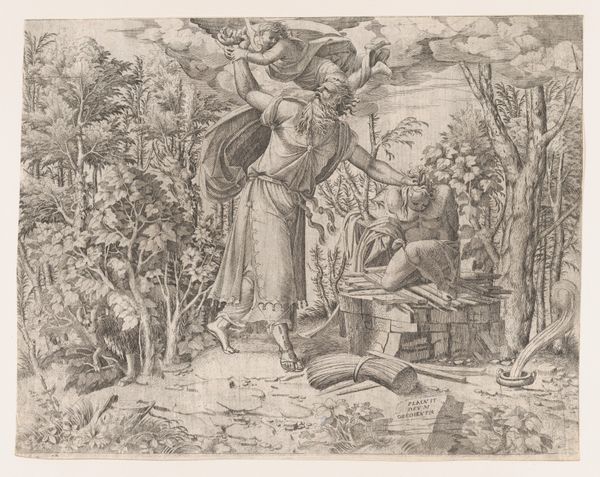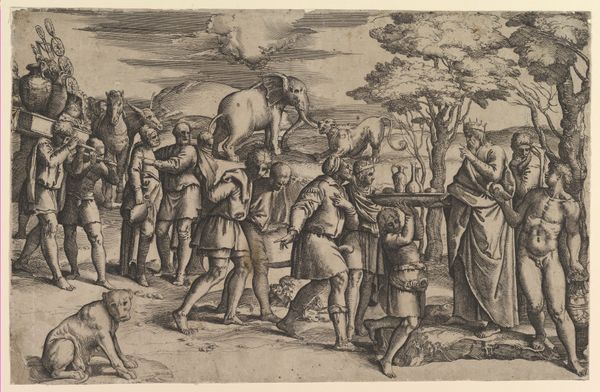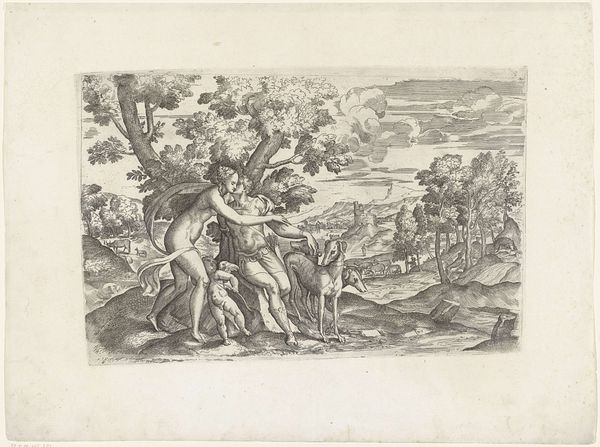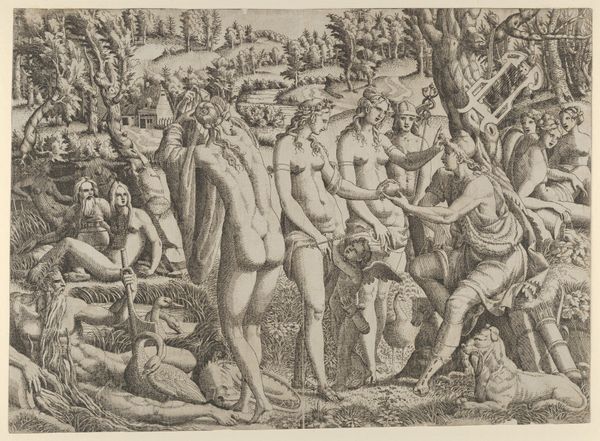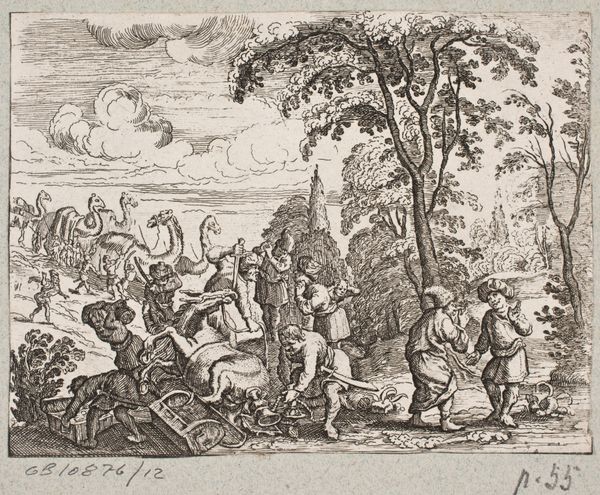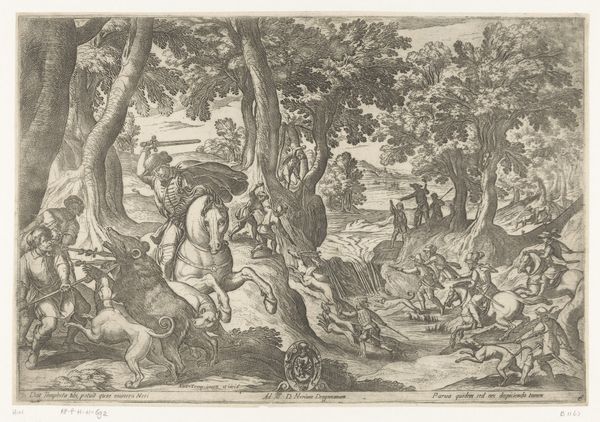
engraving
#
baroque
#
old engraving style
#
landscape
#
figuration
#
history-painting
#
engraving
Dimensions: height 282 mm, width 390 mm
Copyright: Rijks Museum: Open Domain
Editor: This engraving, "Diana and her Nymphs" by Christian Sas, dates to after 1658. It’s striking how the artist captures light and shadow using just lines. What do you make of the contrast between the relaxed figure on the left and Diana with her entourage on the right? Curator: That contrast is key, isn’t it? The figure, likely representing a river god or perhaps even Pan, is immersed in nature, a symbol of untamed wildness. Diana and her nymphs, conversely, embody order, and communal values. How might that tension speak to us? Editor: It feels almost like a clash of worlds, or maybe a transition? Curator: Precisely! Think of the moon goddess, Diana, a protector of chastity, confronted by raw, masculine energy. The artist's cultural memory invites us to contemplate these oppositions. Consider the nymphs, bound together. What do they suggest to you? Editor: Loyalty, maybe? Or a shared purpose, given Diana’s role? Their body language is almost identical, creating the idea of sisterhood. Curator: Yes! A powerful symbol of feminine solidarity and devotion to their goddess. They are traveling from one world into the other. See the quiver is placed center stage; in combination with the crescent, it could embody their beliefs, culture, power, status or allegiance. Editor: I hadn’t really considered how all these symbols contribute to the meaning. Curator: Indeed. Each visual element serves as a signifier, laden with historical, social, and psychological weight, constantly inviting fresh interpretations, reflecting cultural shifts in thought and practice. Editor: I see what you mean, thank you. It's amazing to consider how much these symbols have carried through time. Curator: The power of the symbol persists through cultural history, it's up to us to decide which ones should travel on.
Comments
No comments
Be the first to comment and join the conversation on the ultimate creative platform.

